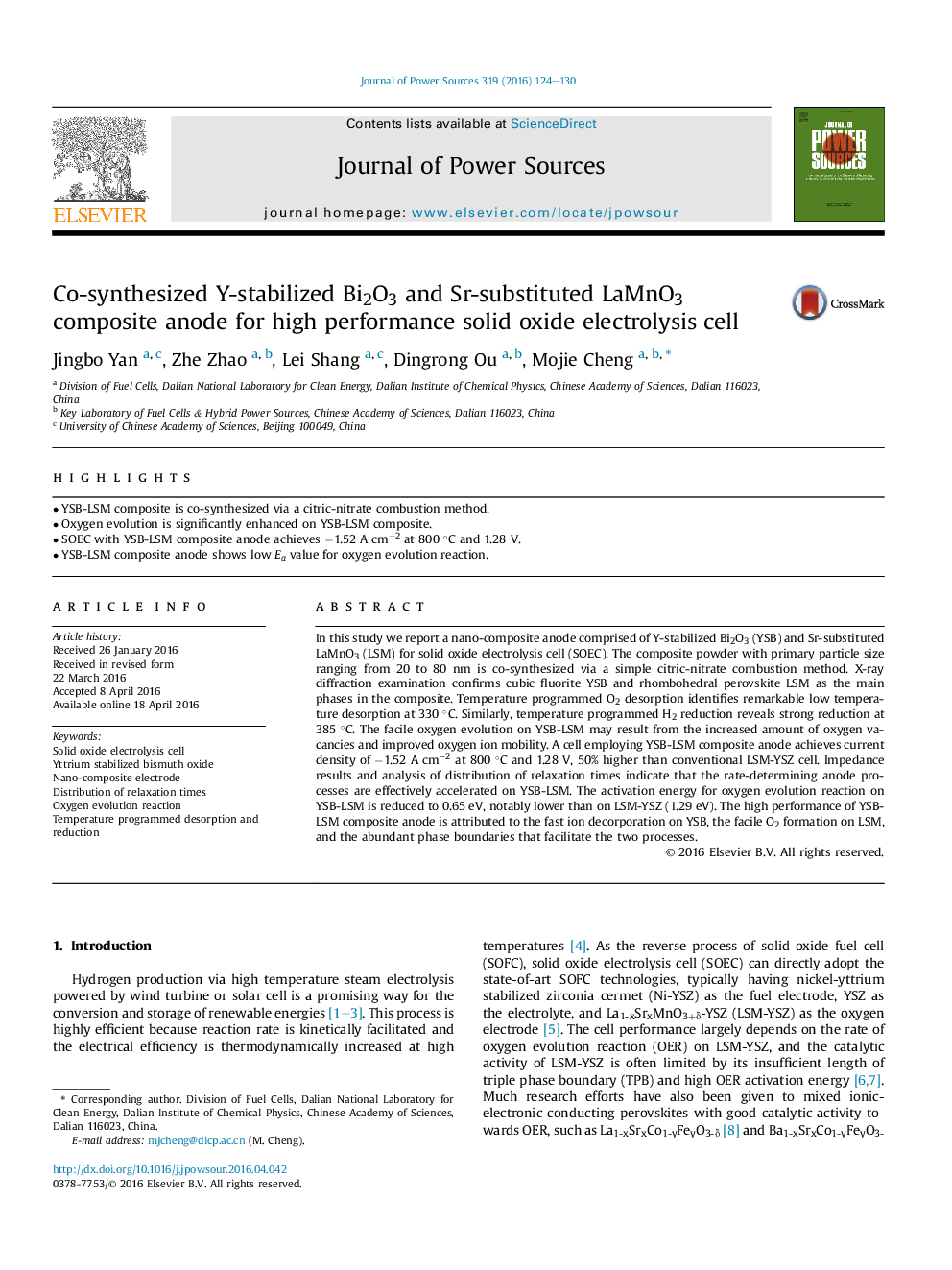| Article ID | Journal | Published Year | Pages | File Type |
|---|---|---|---|---|
| 1292011 | Journal of Power Sources | 2016 | 7 Pages |
•YSB-LSM composite is co-synthesized via a citric-nitrate combustion method.•Oxygen evolution is significantly enhanced on YSB-LSM composite.•SOEC with YSB-LSM composite anode achieves −1.52 A cm−2 at 800 °C and 1.28 V.•YSB-LSM composite anode shows low Ea value for oxygen evolution reaction.
In this study we report a nano-composite anode comprised of Y-stabilized Bi2O3 (YSB) and Sr-substituted LaMnO3 (LSM) for solid oxide electrolysis cell (SOEC). The composite powder with primary particle size ranging from 20 to 80 nm is co-synthesized via a simple citric-nitrate combustion method. X-ray diffraction examination confirms cubic fluorite YSB and rhombohedral perovskite LSM as the main phases in the composite. Temperature programmed O2 desorption identifies remarkable low temperature desorption at 330 °C. Similarly, temperature programmed H2 reduction reveals strong reduction at 385 °C. The facile oxygen evolution on YSB-LSM may result from the increased amount of oxygen vacancies and improved oxygen ion mobility. A cell employing YSB-LSM composite anode achieves current density of −1.52 A cm−2 at 800 °C and 1.28 V, 50% higher than conventional LSM-YSZ cell. Impedance results and analysis of distribution of relaxation times indicate that the rate-determining anode processes are effectively accelerated on YSB-LSM. The activation energy for oxygen evolution reaction on YSB-LSM is reduced to 0.65 eV, notably lower than on LSM-YSZ (1.29 eV). The high performance of YSB-LSM composite anode is attributed to the fast ion decorporation on YSB, the facile O2 formation on LSM, and the abundant phase boundaries that facilitate the two processes.
